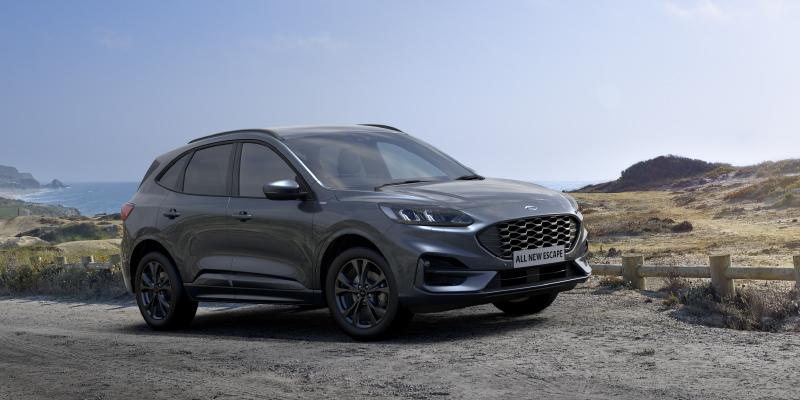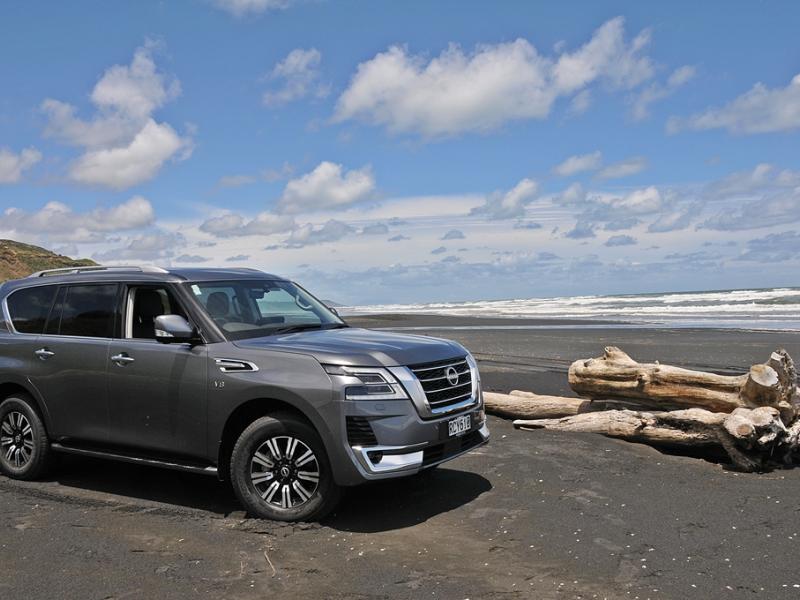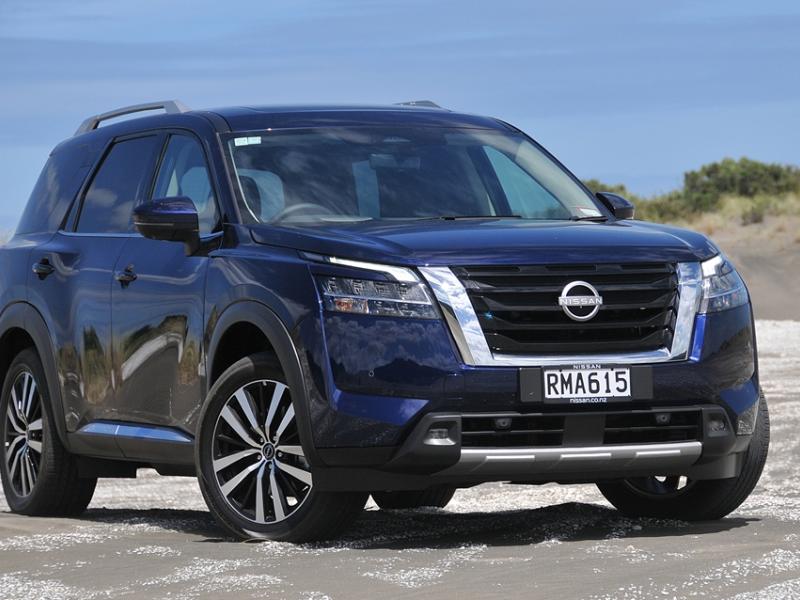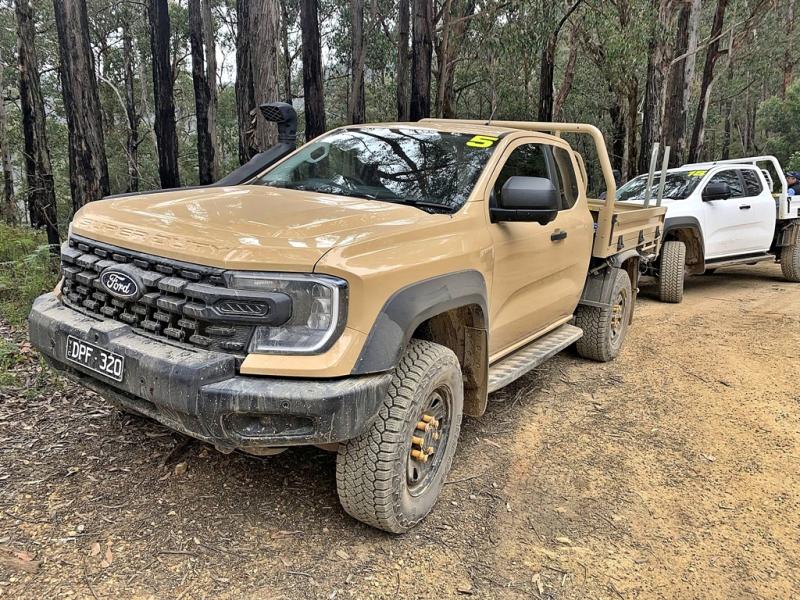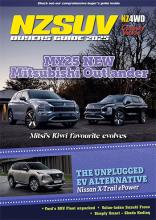As we write this, Ford dealers are holding off customers with long poles in anticipation of the arrival of the new model Escape, which was revealed in July of this year in a (what was for Ford) subdued media event.
Ford has made a habit of subtle two-model launch events, but the two vehicles that the company chooses to reveal, more than make up for the low-key events, delivering vehicles tailormade for the New Zealand market.
When they arrive, there will be six Escape models in total and the big news is that two of the five will be Plug-in hybrid Electric Vehicles (PHEVs).
They will have similar engine tech to the Transit Custom PHEV (as seen in the latest edition of NZ Company Vehicle magazine) but with much more focus (no pun int…alright, there WAS a pun intended) on hypermiling.
Now there’s an interesting word to use in context of EVs.
There was a time when hypermiling – the term used to describe extreme techniques to maximise fuel efficiency – would get you beating manufacturer’s stated fuel consumption figures, often by dramatic reductions.
Wanna try it in an SUV like the PHEV Escape? You’ll only – according to Ford anyway – have to beat 1.5 litres per 100km on a combined cycle.
Like the Transit commercial, the Escape PHEVs have four selectable modes which drivers will find help to drive the vehicle most efficiently.
This is actually part of the education of the new-to-EV driver, who will find their traditional methods of driving will change. Learning to avoid petrol stations for longer periods and working out where the chargers on your popular travel routes are.
All EV/PHEV drivers will – at some point – try to get the best mileage they can, which is where the four modes come in.
A button switches the Escape between EV Auto, EV Now, EV Later and EV Charge. EV Auto allows the vehicle to determine whether the petrol engine is required to assist the ‘primary’ electric motor, or if it can run on the electric only.
EV Charge is the mode to use when your battery is getting low. The system forces the petrol engine to help with the regenerative braking to charge the battery.
EV Now and EV Later are modes which could be considered ahead of their time. Overseas, there are no-go zones for fossil fuelled vehicles, where zero emissions are mandatory.EV Now is designed to be used as you cross the ‘barrier’ between dino juice friendly open roads and clean sparkling leccy power city environs.
EV Later is what you use to hold your battery power at a specific level so that you can approach a no petrol zone with some battery charge in reserve.
This last will be really useful when we have a long Kelly Tarlton-type tunnel as a second Auckland harbour crossing and we don’t want the walls gunked up with exhaust gases or we start taking emissions seriously.
The Escape PHEVs are also being touted as being able to exceed 50km in range – the industry standard – on pure electric power alone. And they’re coming to a Ford dealer near you, very soon.
Of course, there will be those who want little or no truck with these gosh-darned, new-fangled gadgets which you have to remember to plug into your house every night (not as arduous as you think, but don’t use extension cords; put in an outdoor socket).
For those who prefer to keep using dinosaur juice (petrol), the four remaining Escape models have been peaked and tweaked too, so what keeps them moving then?
That would be EcoBoost engine tech, and because everyone’s on an electric buzz these days, what’s EcoBoost again?
Short answer: a family of engines which use direct fuel injection, variable camshaft timing and turbocharging to save fuel and boost power. In the case of the mid-sized Escape, a 2-litre EcoBoost engine is used to deliver 183kW of power at 5700rpm and 387Nm of torque at 3100rpm.
The stated fuel consumption is 8.6 litres per 100km with a CO2 emission figure of 199gm/km, but given the Escapes all have an 8-speed stepped continuously variable transmission with paddle shifters, NZSUV drivers are keen to take that figure and put it in the 556 litre boot, and if it doesn’t fit, we’ll drop the seats to accommodate 1478 litres.
And on the subject of space and size, a little-known consideration is that the new Escape, while being longer, wider and lower than the previous model – therefore making the new one bigger than the model it replaces – is based on the same platform as the award-winning Ford Focus; yes, the hatchback forms the basis for a five seat medium-sized SUV.
And if that doesn’t bake your noodle, the retracting seats on board the Escape provide greater legroom for the rear seat passengers. Now how the heck did they do that?
These would be questions for the tape measure. In the meantime however, you might be wondering about the specification grades and the equipment levels? No?
Too bad, here they are: Escapes will follow the grade spec’ we are used to seeing: a base model with front wheel drive and EcoBoost, a base model PHEV, two ST-Lines (front or all-wheel-drive) with EcoBoost, an ST-Line X PHEV and an ST-Line X EcoBoost. Got that? Good, there’s a quiz at the end…
All Escapes will feature FordPass Connect on-board modems for maximum efficiency and utilisation, wireless phone charging, SYNC 3 voice integrated commands, Apple Carplay and Android Auto connectivity and phone/audio streaming and satellite navigation.
Actually, we shouldn’t just leave it there; the Escape’s infotainment suite is more than substantial.
Depending on the specification there is the choice of six or 10 speakers with the ST-Line X – PHEV or ICE – taking the top end Bang&Olafsen audio system.
Standard equipment across all Escape models is an 8-inch colour touchscreen to access the complete infotainment functionality and provide a place to display the 180 split view offered by the reversing camera.
And that leads neatly into safety. The Escape comes with all the requisite safety features of the contemporary SUV and includes autonomous emergency braking with pedestrian detection, evasive steering assist, blind spot detection, lane departure warning and lane keep assist.
In addition, the Escape features traffic jam assist, traffic sign recognition, cross traffic alert and driver impairment monitoring.
To summarise then, Ford has developed – and developed is the word, since this is the fourth generation of the Escape – a technologically advanced, practically-sized, contemporarily styled SUV to drive into the 21st century.

